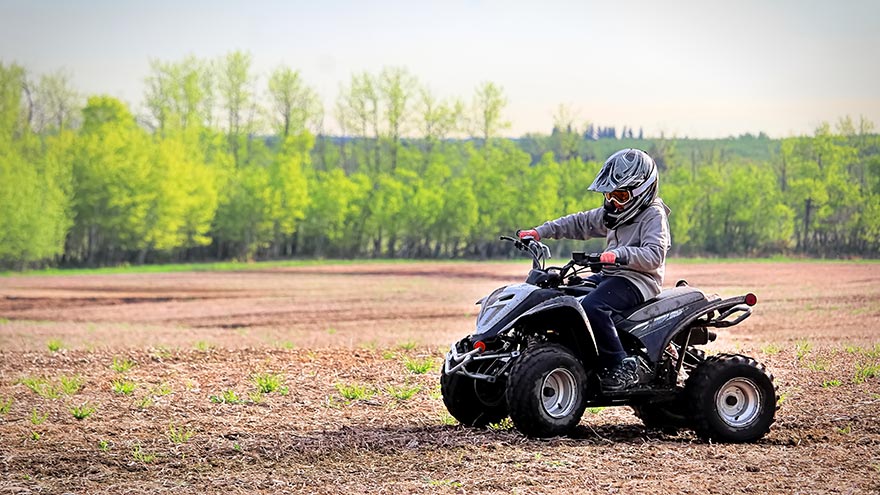Buscar
-
Head Injuries, Sprains and Broken Bones
Participating in sports and physical activities is enjoyable and beneficial for our health. However, the risk of injuries comes with the fun and excitement of sports. Sports-related injuries, including sprains, traumatic brain injuries and broken bones, are more common than we realize and can land you in the emergency room. Dr. Scott Shepherd, Emergency Medicine Physician, provides a wealth of information. Traumatic Brain Injuries: The Invisible Threat Traumatic brain injuries come in many forms. From “mild” brain injuries, concussions, to major brain injuries and bleeds. Sometimes it is very difficult to tell the difference between a major injury and a minor injury because many of the symptoms are the same. Concussions Concussions are a type of “mild” traumatic brain injury resulting from a blow to the head or a violent shaking of the body that causes a transient alteration in mental function. They are particularly prevalent in contact sports such as football, soccer and boxing. A concussion can affect memory, judgment, reflexes, speech, balance and muscle coordination. Typically, concussions are not life threatening and usually short lived. However, multiple concussions can lead to permanent disabilities. So, remember there is nothing “mild” about injuring your brain. Contusions The more serious brain injuries from brain contusions (actual bleeding in the brain material) and bleeding that presses on the brain are life threatening. These injuries are caused by the same blow to the head as a concussion and the symptoms are the same from memory deficits, loss of coordination to coma. Because of this, anyone who has a blow to the head and is not acting normal should be evaluated by a medical professional. Anyone suspected of having a severe head injury should seek immediate medical attention and follow a strict protocol for rest and a gradual return to play. It is important to note a person may not lose consciousness if they suffer a concussion; however, major consequences can occur if not properly managed. If you suspect you have an emergency that needs immediate medical attention, please call 911 or visit an emergency room near you. While it is impossible to prevent traumatic brain injuries altogether, the severity of the injury can be mitigated through proper helmet usage and knowing your skill level when participating in high-risk activities. The guidelines for picking a helmet for summer activities such as mountain biking, dirt biking and riding off highway vehicles are similar to those of picking a helmet for winter sports. Learn more about choosing the right helmet. Any blow to your head, neck or upper body can result in a major head injury Signs to watch for include the following: Headache Dizziness Blurred vision Difficulty with thinking, attention or memory Sensitivity to noise or light Ringing in the ears Changes in hearing Double vision Changes in behavior Balance issues Nausea/vomiting Sprains: The Annoying Twist One of the most common sports injuries is a sprain, which occurs when ligaments that connect bones are stretched or torn. Sprains typically occur in joints, such as the ankle, knee or wrist, and are often caused by sudden twists or impacts. Symptoms may include: Pain Swelling Bruising Limited range of motion Rest, ice, compression and elevation (RICE) are the initial recommended treatment, followed by physical therapy to regain strength and mobility.
-
Tips for Keeping Your Kids Safe on ATVs
In the state of Nevada, all-terrain vehicles (ATVs) are one of the pediatric population's top three mechanisms of injury. Kids under 16 are the leading victims of ATV incidents and fatalities because they cannot reach controls, cannot activate controls and they have a restricted field of vision. Tips to Safely Utilize ATVs ATVs are off-road vehicles used for activities such as off-roading and farm work. In the state of Nevada, it is legal for teens to ride them, even without a driver's license. However, even though it is legal for teens to ride these vehicles, it is not always safe. Here are a couple of tips and tricks to stay safe while using ATVs: Be at least 16 years old. Health and safety experts strongly discourage ATV use by anyone younger than 16. Operating an ATV demands that drivers be skilled at making quick adjustments, such as speeding up, slowing down and shifting their weight to help turn the vehicle. People under 16 are less likely to have the physical strength and decision-making experience necessary to drive an ATV safely. Get safety certified. Before you ride an ATV on a trail, learn how to do it safely in a controlled setting. Visit the ATV Safety Institute's website for course information. Ride an ATV that's right for your size and age. Full-size ATVs can weigh more than 600 pounds and be very difficult to handle. Select an ATV designed for you or your child's age group. This sizing can be found on the manufacturer's warning label right on the vehicle. Always wear an approved helmet and eye protection. The best helmets for ATV use have a full-face shield and meet Department of Transportation safety standards. Many helmets have flip-down visors for eye protection. If yours doesn't, be sure to wear shatterproof goggles and not just sunglasses. Wear long pants, long sleeves, gloves and over-the-ankle boots. ATVs have a high center of gravity and no safety cages, roll bars or seatbelts. If they tip, you can fall off. Protective clothing will help prevent scrapes and cuts if you get thrown from an ATV. Always ride at a safe speed on a trail meant for ATV use. When ATVs get going fast, they become less stable and more likely to tip. ATV tires are not meant for pavement or high speeds. Both factors can make turning an ATV difficult and dangerous.

